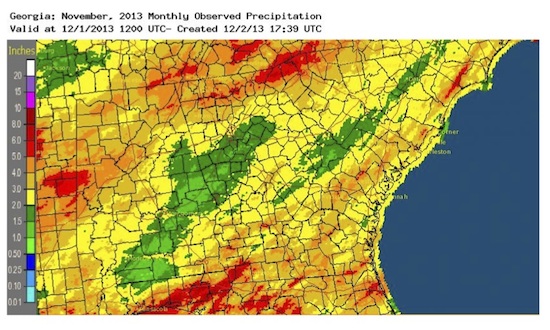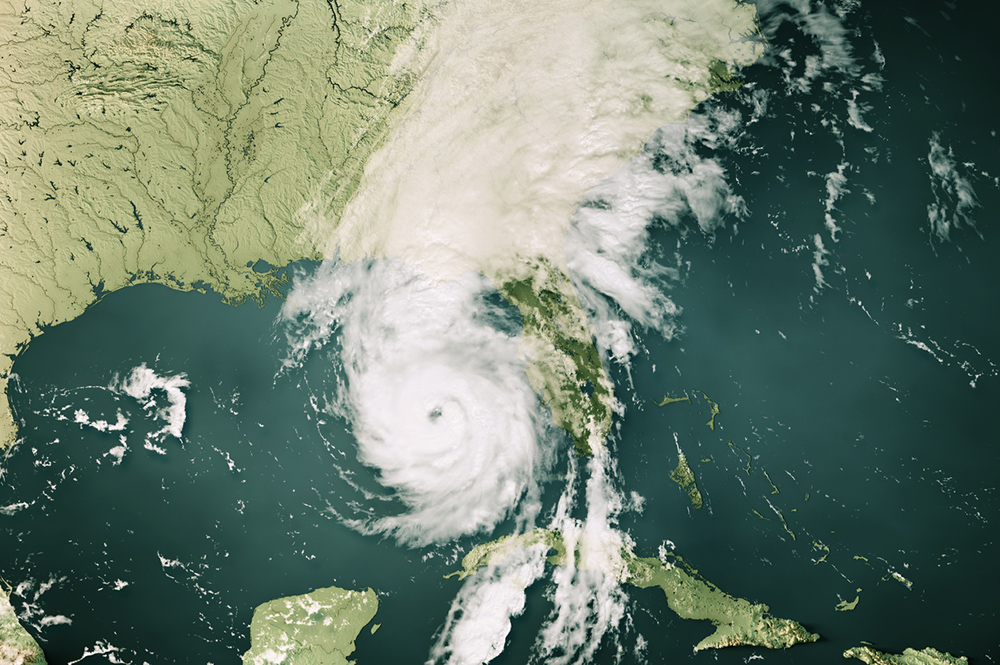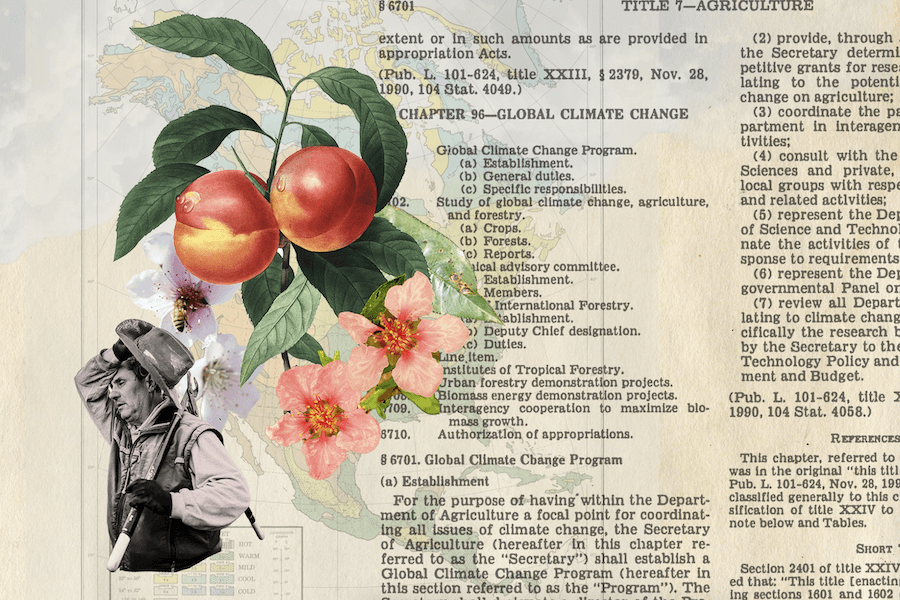With record-breaking low and high temperatures, November’s climate report may offer a fair preview of this winter’s projected, erratic weather patterns.
Overall, temperatures were below normal last month, but some cities like Macon and Augusta saw record highs, of 86 and 87 degrees respectively, in the middle of the month.
Chilly turkey day
In contrast, Georgians saw one of the coldest Thanksgivings in recent years. Macon and Augusta set records for coldest nighttime lows that evening, both with low temperatures of 21 degrees. In Macon, the previous record for Nov. 28 was a 22-degree low in 1938. In Augusta, the previous record low for Nov. 28 was also 22 degrees but set in 1903.
Athens saw a record breaking low on Nov. 13 at 23 degrees, breaking the old record set in 1911 of 24 degrees. Athens, Macon and Augusta saw record lows on Nov. 14 (with 23 degrees, 21 degrees and 21 degrees, respectively). The Nov. 14 record lows surpassed a 25 degree observation made in 1969 in Athens, a 25 degree observation made in 1968 in Macon and 23 degree observation made in 1981in Augusta.
In Atlanta, the monthly average temperature was 50.6 degrees (3.4 degrees below normal); in Athens it was 49.8 degrees (4 degrees below normal); in Columbus it was 54.8 degrees (2.5 degrees below normal); in Macon it was 52.3 degrees (3.6 below normal); in Savannah it was 58.7 degrees (0.6 degrees below normal); in Brunswick it was 60.7 degrees (1.1 degree below normal); in Alma it was 57.8 degrees (2.1 degrees below normal); and in Augusta it was 52.3 degrees (2.9 degrees below normal).
Not much rain
The colder temperatures that blanketed the state in the last half of the month were accompanied by rain, but overall November was fairly dry. The dry conditions in northern Georgia at the beginning of the month delayed planting of winter annuals and small grains, but helped with the harvest of cotton and peanuts.
The highest precipitation total recorded by a National Weather Service reporting station was 3.93 inches in Alma (1.45 inches above normal), and the lowest was in Columbus at 1.79 inches (2.31 inches below normal). Savannah received 2.51 inches (0.14 above normal); Athens received 2.42 inches (1.40 below normal); Brunswick received 3.17 inches (1.14 above normal); Augusta received 1.82 inches (1 below normal); Atlanta received 1.87 inches (2.23 below normal); and Macon received 3.37 inches (0.05 above normal).
Record rainfall amounts were reported at Macon on Nov. 26, with 1.36 inches surpassing the old record of 1.16 inches from 1992. Alma received 2.6 inches on the same date, breaking the old record of 1.83 inches set in 1926. Brunswick received 1.61 inches on Nov. 2 and 1.19 inches on Nov. 26, breaking old records of 1.25 inches set in 1979 and 0.71 inches set in 1926, respectively.
Snow?
Atlanta set a daily record for snowfall on the morning of Nov. 27, with 0.4 inches of snow reported at the airport. This is only the third time since records began that Atlanta has received measurable snowfall in November. The largest November snowfall ever observed in Atlanta was 1 inch on Nov. 11, 1968. The largest amount of snowfall reported by a Community Collaborative Rain Hail and Snow network observer was 0.3 inches in Douglasville in the same event on Nov. 27.
The highest single-day rainfall from a CoCoRaHS network observer was 4.63 inches near Pearson in Atkinson County on Nov. 27. An observer near Calhoun in Gordon County reported 4.4 inches on Nov. 26. The highest monthly total rainfall was 9.73 inches, observed northwest of Ellijay in Gilmer County, followed by 7.94 inches measured near Dahlonega in Lumpkin County.
Severe weather was reported on two days in November. All were reports of isolated wind damage to trees and mobile homes. The dry conditions in northern Georgia delayed planting of winter annuals and small grains, but helped with the harvest of cotton and peanuts.
For more on Georgia weather, see the University of Georgia Automated Environmental Monitoring Network website at www.georgiaweather.net.








